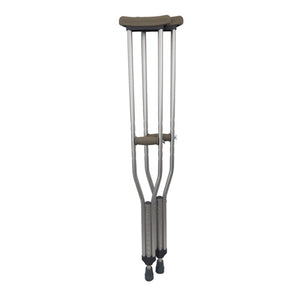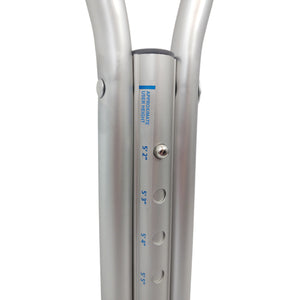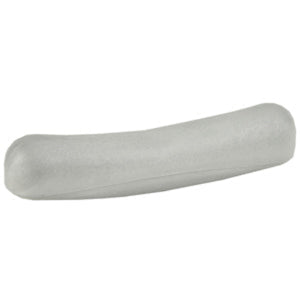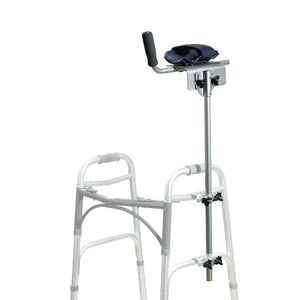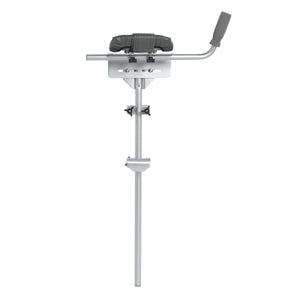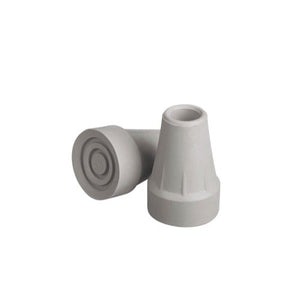Using crutches doesn't have to mean sore armpits and aching hands. With the right cushions, posture, and accessories, you can transform your crutch experience into a more comfortable and manageable part of recovery.
Why Crutch Comfort Matters
Crutches are vital mobility aids during recovery from leg injuries or surgeries. However, using crutches improperly or without adequate support can lead to underarm pain, hand fatigue, and shoulder strain. Knowing how to use crutches without hurting your armpits and wrists is key to maintaining comfort and promoting healing.
10 Ways to Make Crutches More Comfortable
1. Add Soft Crutch Pads or Cushions
Invest in comfortable underarm crutch cushions made from memory foam or gel. These reduce friction and pressure that causes soreness over time. You can also buy crutch pads online from trusted medical supply stores like Moovkart.
2. Use Handle Padding for Hand Comfort
Crutch handles can cause wrist and palm strain. Wrap the handles with soft foam or purchase ergonomic handle covers. This helps prevent blisters and supports longer crutch use without pain.
3. Adjust Crutch Height Correctly
Incorrect crutch height is one of the main causes of discomfort. Ensure your crutches are adjusted so that the top pad is about 1–1.5 inches below your armpits and your elbows are bent at 15–30 degrees.
4. Wear Supportive Gloves
Use workout gloves or padded gloves to reduce hand strain. This is especially helpful if you're experiencing palm soreness from prolonged walking with crutches.
5. Improve Your Posture
Stand tall and avoid leaning too much on your armpits. Crutches are meant to support your weight with your hands and arms—not your shoulders. This prevents nerve irritation under the arms.
6. DIY Crutch Padding Ideas
Can’t access store-bought cushions? Use soft towels, baby blankets, or bubble wrap wrapped in fabric as a temporary solution. Secure them well with tape or Velcro for added underarm support.
7. Take Frequent Breaks
Rest periodically if you’re walking long distances. This helps avoid fatigue and muscle tension in the arms, shoulders, and neck.
8. Strengthen Your Upper Body
Simple exercises like arm raises, light dumbbell curls, and shoulder shrugs can build strength, making crutch walking easier. It also minimizes the chances of joint stiffness and fatigue.
9. Use Crutch Tip Covers
Replace standard rubber crutch tips with anti-slip tips or shock-absorbing ones. These offer better grip and absorb impact, making walking smoother and safer, especially on hard surfaces.
10. Switch to a Knee Scooter or Cane (if eligible)
If crutches are becoming unbearable, consider transitioning to a knee scooter or a walking cane (consult your doctor first). These options can offer better balance and reduce upper body strain.
When to Seek Help
If you’re consistently experiencing underarm numbness, sharp wrist pain, or trouble maintaining balance, consult a medical professional. You might need better-fitted crutches or an alternative mobility aid.
Conclusion
Learning how to make crutches more comfortable is essential for a safe and smooth recovery journey. From DIY crutch padding to investing in high-quality accessories, small changes can make a big difference. Shop for ergonomic crutch pads and comfort upgrades at Moovkart to enhance your healing experience.


